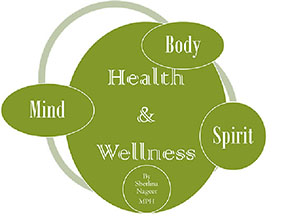Fear is a fascinating thing. Some degree of fear is essential to our survival – in fact, a major part of the training of all living creatures after birth is in figuring out how to keep themselves safe and secure from danger. In order to do that, we need to sort out what to be afraid of, what can injure us, etc. Fear is useful because it helps to separate friend from foe. As children, our caregivers teach us which foods are okay to eat, which animals to avoid, which actions will result in harm. Much of this knowledge has been passed down from generation to generation; that is how evolution works—experiences in the environment provide information which shape our actions, brains, and bodies—both in the short as well as long term.
The common fear of snakes, for example, is thought to result from the fact that snakes were one of the biggest threats that our human ancestors faced centuries ago. Snakes evolved before humans and were harder to detect compared to other more visible predators, thereby posing more of a threat. So the fact that many people are afraid of snakes today, even if they have never been bitten, is likely a result of these ancestors’ experiences being hardwired into our DNA. The point is that fear is learned behaviour that is sometimes helpful. But it isn’t always.
 Fear can also be a hindrance to healthy development. Fear has the potential to be crippling, to negatively impact our well-being, and to prevent us from enjoying life fully. Research has shown that exposure to continuously scary and stressful situations affects all systems of the body and can result in a variety of health problems from raising one’s blood pressure, increasing the risk of heart attacks, cancer, depression, panic attacks, and other mental health issues, to substance abuse, headaches, eating and digestive disorders, fertility problems, and even premature aging and death. Adults and children who are made to feel fearful regularly can also have difficulty learning and focusing, developing healthy relationships, and making appropriate decisions.
Fear can also be a hindrance to healthy development. Fear has the potential to be crippling, to negatively impact our well-being, and to prevent us from enjoying life fully. Research has shown that exposure to continuously scary and stressful situations affects all systems of the body and can result in a variety of health problems from raising one’s blood pressure, increasing the risk of heart attacks, cancer, depression, panic attacks, and other mental health issues, to substance abuse, headaches, eating and digestive disorders, fertility problems, and even premature aging and death. Adults and children who are made to feel fearful regularly can also have difficulty learning and focusing, developing healthy relationships, and making appropriate decisions.
Interestingly, data reveals that people’s fearfulness is not always based on reality. Often, the things people are afraid of are not really the most dangerous things. For example, some people are terrified of flying. But the fact is that road accidents are far more common than plane crashes, so that should be more concerning. Then there are things like climate change and environmental degradation that are altering our world in truly frightening ways – polluting the soil, air and water and affecting the very elements necessary for our survival. However, climate change does not rank high on many people’s threat scale, even though it’s causing such harm in the world. Part of the reason for this is that people don’t always have all or accurate information about a subject when they’re making decisions. Sometimes the information may be available but not easily understandable. But sometimes, even when people have all the correct information, irrational fear still remains. To return to the snake example, there are many snakes that are not poisonous or harmful, but that does not stop people from being afraid of them.
One thing that affects how each particular person deals with and reacts to fear has to do with the amount of power and control that he/she has or believes he/she has over his/her life, environment, and things that cause fear. One key way to handle fear is the ‘fight or flight’ response.
When someone has options and resources that allow them to escape from dangerous situations (flight), they are less likely to be paralyzed by fear. Those who do not have such opportunities, who must stay and face the threats, are much more vulnerable – especially if they lack the ability to successfully defend themselves (fight). It is after all, the weaker among us who become prey and are consumed. But when people believe that they have the power to change their environments they are less negatively impacted by fear. Studies show that people who take action to improve their circumstances and communities—to make them safer and more appealing—are less anxious, fearful, and stressed. Power and control therefore, are intertwined with fear.
Similarly, people who are engaged in activities they care about, who do things they love, learn, and gain from, who have opportunities to express and develop themselves, who are not just forced to battle for survival; these people make up the foundation of a healthy society. This, sadly, is not the case in Guyana today. These days, fear cripples many Guyanese. Whether the fear is real or manufactured, the fact is that it is a major impediment to the healthy development of our society. Fear keeps people from working together. It prevents dialogue and understanding. It breeds violence and ugliness instead of empathy and wellbeing.
It is critical that we understand the role fear is playing in our lives and society today. To reiterate, yes, some fear is necessary to survival. But too much of our fear is irrational and not based on any facts. Humans have the largest brains of all animals; we should therefore, theoretically, be able to process information better than any other, to discern fact from fiction. Unfortunately, it is also true that our baser instincts—those that drive the lust for power, control, and material goods (usually at the expense of others’ well-being)—still have a strong hold on many. Greed and personal glorification still drive much of our decision-making processes, both privately and publicly, and using fear as a tool to divide and conquer is still commonplace.
We must realize how harmful this is and we must reject all those who peddle and seek to manipulate us this way. We must resist the temptation to stereotype. We must think critically and look beyond the surface to figure out the truth. We must do this if we are to build a better, healthier, society. Fear is learned behaviour and can be un-learned.







